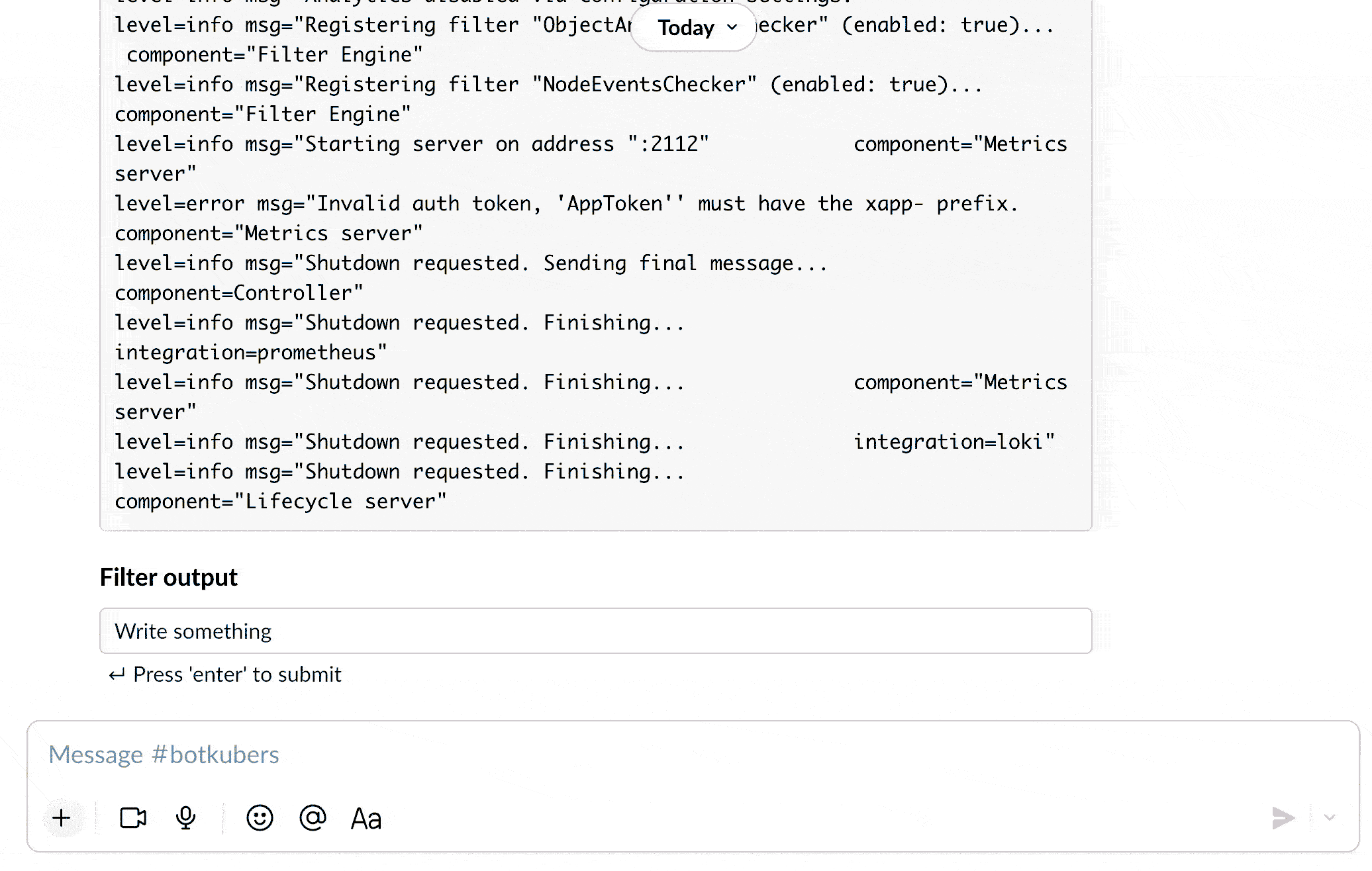Kubectl
Botkube allows you to execute kubectl commands on your Kubernetes cluster. By default, kubectl command execution is disabled. See the Enabling plugin section from the kubectl configuration documentation.
To execute the kubectl commands, send message in following format in the channel where Botkube is already added:
@Botkube kubectl [verb] [resource] [flags]
By default, k and kc are configured as aliases for the kubectl command. You can use them on par with the kubectl command. To read more about aliases configuration, see the Alias section.
This command needs to be executed from configured channel.
Interactive kubectl commands builder
Use the interactive kubectl command builder to construct a kubectl command just by selecting items from dropdowns. This is especially useful on mobile when typing the command is harder.
The builder includes a resource name dropdown list. This is pre-populated with all the relevant resource names. It's great for discovering resources with the option to select them. E.g. Just grab a Pod name without needing to type or copy-and-paste.
To start the interactive kubectl command builder, run @Botkube kubectl from the configured channel where Botkube is added.
You can also use any of the configured aliases - for example, the default k one, as illustrated below:

Limitations
Keep in mind that the interactive command builder may not support all the commands that you can run just by typing them directly in a chat window. The following policies are applied:
Under verbs' dropdown, we display verbs that are defined under the
interactiveBuilder.allowed.verbsconfiguration.tipThe default verbs for the
kubectlplugin found in the values.yaml file. If you ServiceAccount allow running other actions such asdelete, you can add them directly underinteractiveBuilder.allowed.verbs.Under resources' dropdown, we display resources that are defined under the
interactiveBuilder.allowed.resourcesconfiguration and are allowed for already selected verb. For example, for thelogsverb we display onlypods,statefulsets,deployments, anddaemonsets.tipThe default resources for the
kubectlplugin found in the values.yaml file.If you ServiceAccount allow access to more resources, you can add them directly under
interactiveBuilder.allowed.resources.For resources that are namespace-scoped, under namespaces' dropdown, we display
interactiveBuilder.allowed.namespacesif defined. If static namespaces are not specified, plugin needs to have access to fetch all Namespaces, otherwise Namespace dropdown won't be visible at all.The
kubectlcommand preview is displayed only if the command that you built is valid, and you have permission to run it.